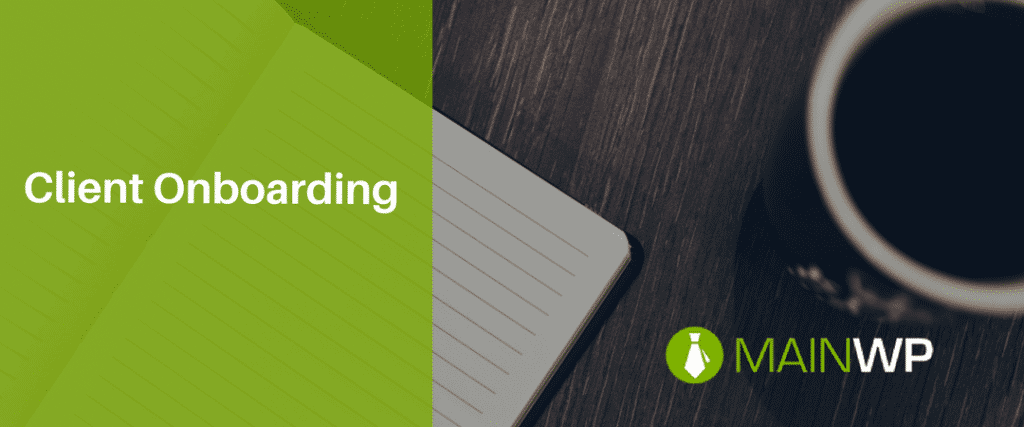The Welcome Phase of our onboarding process is the place to articulate your working procedures as well as set expectations for the project.
During the welcome phase, you will want to take advantage of various ways to give your client important information which will help welcome to the team.
During the Welcome Phase, you are inviting your client to be part of your team, making them feel part of your family.
Do you want to know what will make you stand out to your client? Doing something personable.
Imagine if you will, getting started with a new client and they get, in addition to your welcome packet, a box of donuts or a bag of premium coffee.
Hunter Riley and John Godwin do this for their startup Schelp. The boutique furniture delivery service in Chicago bills itself as “Your neighbor with a truck.”
When a new customer schedules a delivery, the first question the company asks is, “How do you like your coffee?” When the delivery driver arrives, they have their coffee for them.
These kinds of welcomes can help us make an impression to our customers and set the experience as a positive one.
The Welcome Phase of the onboarding process is very important.
In this article, we are going to address various ways to perfect the Welcome Phase process for your early stage onboarding.
Welcome Package
Your welcome package is the time to roll out the red carpet, so to speak, getting some upfront information to your new client as well as giving them a warm welcome.
Karen sergeant at Redbooth reminds us,
“What can manage expectations and solve problems before they start? A beautifully branded PDF — customized with your client’s name — that outlines procedures, deadlines, expectations and routines. This, friends, is the Welcome Wagon that simplifies your life.”
What do you include in such a Welcome Package? Well, it is only limited, I believe, by one’s creativity. Sara Jantsch writes at Duct Tape Marketing,
“A ‘surprise and delight.’ Some kind of gift that the client is not expecting. This could be something related to your products or services or something completely unrelated.”
Start with a nice letter, maybe a handwritten note, as Jennifer Bourn points out. When is the last time you have gotten a handwritten note?
I got one a few weeks back. I had contracted with a local agency to design a logo for a new project.
A few days later, my account representative handed me a handwritten note.
It left a favorable impression with me.
What else should you include?
Do you have hours of operation? Is there a way you prefer to communicate? How about your invoicing process? These are all things that our new client needs to know.
Create a simple, official document that goes over all of this information.
Will you customers have login access to some kind of dashboard? If so, you will need to take some time to go over that information with them.

Initial Meeting
The initial meeting is often referred to as the kick-off meeting with the client. Members of your client’s team involved in the project will meet at the same time with members of your team to go over the project.
It is a great time to provide more assurances that you were the right choice.
Here you have a chance to show your team’s expertise, go over important information and brainstorm ideas together.
It is also the ideal time to a new client questionnaire filled out.
What kind of things should you cover at the kick-off meeting? Kyle Racki, CEO of Proposify, does an excellent job breaking down a kick-off meeting with your client. The key is to decide ahead of time the things you should discuss, create an agenda, make sure those working on the project for both your team and your clientss are present, and go over goals and timelines.
Contract
Reviewing the contract is a good idea during the Welcome Phase. Reviewing should come after the contract has been decided and signed.
In order to review the contract or agreement, it is a good idea to submit a copy so that the client knows what they have agreed to.
Nevertheless, if you are building a checklist, you should include this information.
Additionally, it might be best to have a representative of your company to go over the information, pointing out things they need to go, and then giving your new client a chance to ask any questions.
Billing issues will send a working relationship south pretty quickly. Being on the same page at the beginning is very valuable.
Project Scope
If you submitted your proposal and contract, and the client has signed off, then you have a set of shared objectives you are work with.
Include a Project Scope separate from the legalese and include a timeframe for the project.
The best thing is to have the scope at the front of mind. Review the scope of the project and remind your client that deliverables outside the scope are subject to additional fees and what the fees are.

CRM/Project Management
During the Welcome Phase is a good time to enter all of your new client’s information into your client relationship manager software.
In addition, the Welcome Phase is the right time to assign the client to a member of the team. This person becomes responsible for communication. He or she may also be the project manager depending on the roles that exist on your team.
If you use a project management system, this would be a good time to get them onboard and up to speed using your system. Invite the representative from your new client to create an account in your project management system.
Follow-up
After you have breezed through the Welcome Phase of your onboarding process, follow up with your client to see if they have questions.
This will become the beginning of the working part of your relationship.
Wrapping it up
The Welcome Phase plays an important part of the onboarding process. It helps to set expectations, get your client on the same page and create unity between your team and your client’s team.
Do you have a process to deliver these important pieces of information to your client? How do you “surprise and delight” your clients?







